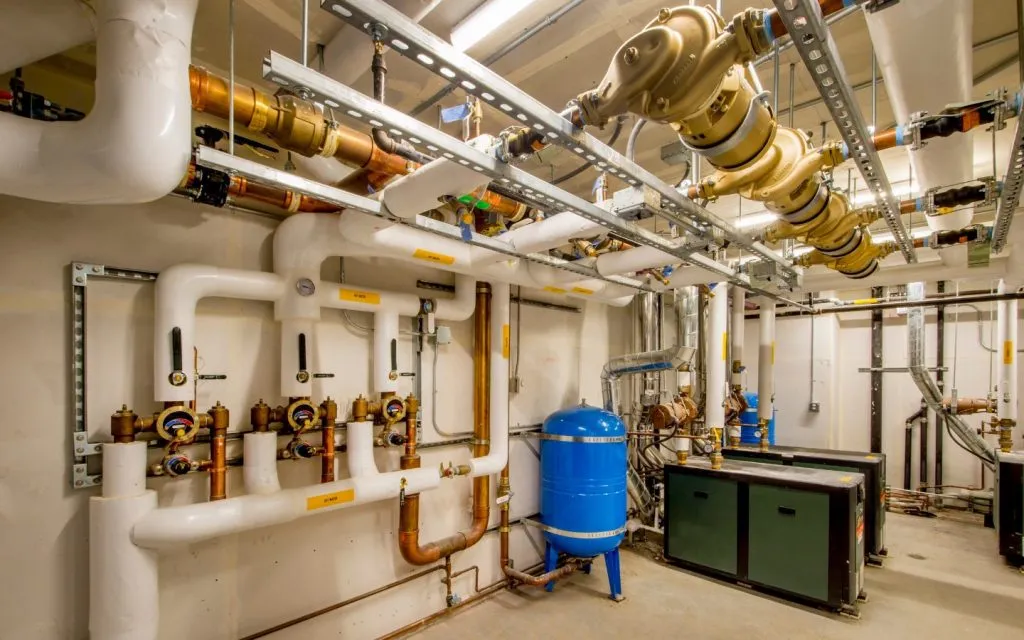Learning
5 Ways to Improve Your Maintenance Planning and Avoid Catastrophic Failure

As Benjamin Franklin once said, “An ounce of prevention is worth a pound of cure.” This phrase still holds true today, particularly when it comes to proactive maintenance planning. According to a report by Siemens, unplanned downtime costs Fortune Global 500 companies up to 11% of their annual turnover.
In light of this, it’s essential to address common challenges in maintenance planning to ensure an organization’s success. Therefore, our exploration of this topic is not only informative but also crucial.
Maintenance planning is the backbone of operational efficiency and cost control. Its challenges, if left unaddressed, can have profound ramifications. As Warren Buffett wisely pointed out, “It takes 20 years to build a reputation and five minutes to ruin it.” In the corporate world, these five minutes could manifest as unexpected downtime, costly breakdowns, or resource misallocation.
This article delves into the significant hurdles businesses encounter in maintenance planning and offers practical solutions to surmount these obstacles.
Common Challenges in Maintenance Planning
One of the most prevalent challenges in maintenance planning is the absence of comprehensive data and documentation. This scarcity of records makes it arduous to track equipment history, plan for future maintenance, and ensure compliance with regulations. Inadequate records hinder decision-making and potentially lead to costly operational disruptions.
Inefficient scheduling and resource allocation represent another significant challenge. Organizations often grapple with allocating maintenance tasks and resources, causing disruptions and increased operational costs. The mismanagement of these resources results in inefficient maintenance planning, impacting the organization’s overall performance.
Transitioning from reactive to proactive maintenance is a common challenge many organizations face. Reactive maintenance, addressing issues as they arise, can incur high costs and frequent downtime. Preventing issues before they escalate is a more sustainable approach, but it necessitates a shift in mindset and strategy.
Poor communication and collaboration within an organization can impede maintenance planning significantly. Effective maintenance planning relies on seamless communication and collaboration between various departments and teams. When these processes break down, tasks become disjointed, leading to inefficiencies and increased operational costs.
Financial constraints, often resulting in insufficient budgets, represent an ongoing challenge. Many organizations struggle to allocate the necessary funds for maintaining their assets properly. Budgetary limitations can have far-reaching consequences, affecting the organization’s performance and longevity.
Addressing Data and Documentation Challenges
Comprehensive data and documentation play a pivotal role in effective maintenance planning. The absence of these vital components impedes the organization’s ability to make informed decisions regarding asset maintenance. Implementing digital asset management systems can revolutionize data collection and storage, making information readily accessible and up-to-date.
Regular data audits and updates are essential to maintain accurate records. Periodic checks ensure that the information required for maintenance planning remains current, reducing the risk of outdated and erroneous data causing disruptions.
Clear and comprehensive documentation of maintenance procedures is crucial for maintaining consistency and efficiency. Providing employees with access to well-documented guidelines for conducting maintenance tasks ensures a standardized approach that can be replicated across the organization.
Investing in employee training and facilitating knowledge transfer can help ensure that the necessary skills and expertise are readily available within the organization. This reduces the organization’s reliance on external resources and enhances its overall capability to handle maintenance tasks.
“Implementing advanced digital solutions, such as robust CMMS systems, empowers organizations to streamline their maintenance planning processes effectively”, says Yogesh Choudhary, CEO of FieldCircle.
Improving Scheduling and Resource Allocation
Efficient scheduling is paramount in effective maintenance planning. Streamlining scheduling processes involves creating a structured system for assigning tasks and monitoring progress, which ensures that resources are utilized optimally.
The prioritization of critical maintenance tasks is essential for minimizing downtime. Identifying the most critical assets and allocating resources accordingly can make a substantial difference in the organization’s operational efficiency.
Utilizing CMMS can streamline maintenance planning processes and enhance data-driven decision-making. These systems automate various aspects of maintenance planning, facilitating efficiency and cost reduction.
Resource optimization and allocation are integral to preventing operational disruptions. Ensuring that the right people, tools, and materials are available for each maintenance task is crucial for preventing delays and minimizing inefficiencies.
Predictive maintenance strategies and condition-based monitoring can be employed to address scheduling challenges effectively. By detecting issues before they become critical, organizations can proactively address maintenance needs, reducing downtime.
Shifting from Reactive to Proactive Maintenance
Reactive maintenance often increases costs and extended downtime, making it an ineffective approach for many organizations. To shift from this reactive mindset to a proactive one, preventive and predictive maintenance strategies should be implemented. These approaches enable the early detection of issues and the initiation of preventive measures.
Identifying and addressing the root causes of equipment failures is a cornerstone of proactive maintenance. By tackling the source of failures, organizations can prevent costly downtime and subsequent repairs.
Reliability-Centered Maintenance (RCM) approaches focus on optimizing maintenance processes. They identify the most critical tasks and develop strategies to address them effectively, thus enhancing the organization’s overall maintenance planning.
Performance benchmarking and Key Performance Indicators (KPIs) provide valuable tools for tracking the success of maintenance planning efforts. These metrics help organizations continuously improve their maintenance processes, ensuring a proactive and cost-effective approach.
Enhancing Communication and Collaboration
Clear communication is pivotal in maintenance planning. Effective maintenance planning relies on seamless communication and collaboration between various departments and teams, ensuring all parties are aligned with common goals.
Implementing a comprehensive CMMS software can facilitate real-time data sharing and collaboration among teams. These systems allow information to be accessed and updated by all relevant parties, fostering enhanced teamwork and efficiency.
Creating cross-functional teams involving representatives from various departments can address communication and collaboration challenges. Such teams encourage the exchange of information and the alignment of goals, ensuring that maintenance tasks proceed smoothly.
Regular meetings and feedback loops are essential for maintaining open lines of communication. These meetings enable teams to discuss issues and coordinate effectively, preventing misunderstandings and delays.
In addition to technical skills, employees should receive training in soft skills and teamwork. This not only enhances the organization’s ability to communicate and collaborate but also fosters a positive working environment.
Overcoming Budget and Resource Constraints
Analyzing the cost of maintenance downtime can help organizations justify allocating adequate budgets. Understanding the financial impact of downtime can be an effective way to secure funding for maintenance planning.
Securing adequate budget allocation is crucial to overcoming budget constraints. Organizations must make a compelling case for the importance of effective maintenance, highlighting its long-term benefits.
Leveraging predictive maintenance can significantly reduce costs over time. By minimizing emergency repairs and extending asset lifespans, organizations can operate more efficiently and cost-effectively.
Vendor partnerships and outsourcing can help organizations overcome resource constraints by bringing in external expertise. These partnerships enable organizations to access specialized skills and resources when needed.
Prioritizing critical assets when allocating resources ensures that available resources are used efficiently. This targeted approach maximizes the organization’s ability to maintain its most vital assets.
Wrapping up
In conclusion, addressing common challenges in maintenance planning is essential for organizations aiming to achieve operational excellence and reduce costs.
By tackling data and documentation issues, improving scheduling and resource allocation, transitioning from reactive to proactive maintenance, enhancing communication and collaboration, and overcoming budget constraints, businesses can optimize their maintenance planning efforts.
Business leaders should recognize the importance of these steps and take proactive measures to ensure their organizations run smoothly and efficiently.
SEE ALSO: How To Properly Apply Sunscreen To Safeguard Your Skin From Harmful UV Rays
Learning
First-Time Buyer’s Guide to the UK Property Market

Entering the UK property market as a first-time buyer can feel both exciting and daunting. The process is filled with potential pitfalls and complex decisions, but with the right guidance, it can be navigated smoothly. The estate agents in Yorkshire demystify the journey from the initial decision to buy a home to the moment you step over the threshold of your new property.
Understanding Your Financial Position
The first and perhaps most crucial step in the home-buying process is understanding your financial situation. This includes assessing your savings, income, and current debts. Here’s how you can prepare:
1. Deposit: Generally, you’ll need at least 5% of the property price as a deposit, though aiming for 10% or more can provide better mortgage rates.
2. Income and Expenses: Use a budget planner to assess your monthly income against your expenses. This will help you understand how much you can afford in monthly mortgage repayments.
3. Credit Score: Lenders will evaluate your credit score to determine your mortgage eligibility. So it’s important to have a good credit score, and you should work on it if required.
4. Mortgage Options: Speak to a mortgage advisor to understand different types of mortgages, such as fixed-rate, variable-rate, and help-to-buy schemes.
Getting a Mortgage Agreement in Principle
A Mortgage Agreement in Principle (AIP) is a statement from a lender indicating how much they’ll likely lend you. You will be a more attractive buyer with an AIP as it shows sellers you’re serious and financially prepared.
Deciding What You Want
Before you start viewing properties, it’s essential to know what you’re looking for. Consider the following factors:
1. Location: Proximity to work, schools, public transport, and amenities are key. Research neighbourhoods to find the best fit for your lifestyle.
2. Property Type: Decide whether you want a flat, terraced house, semi-detached, or detached property. Each has its pros and cons.
3. Must-Haves: Make a list of non-negotiables, such as the number of bedrooms, garden size, and parking facilities.
4. Future Proofing: Consider your future needs. Are you planning to start a family? Do you need space for a home office?
Starting the Property Search
With a clear idea of what you’re looking for, you can begin your property search. Here are some tips:
1. Use Online Portals: Websites like Rightmove, Zoopla, and OnTheMarket are excellent starting points. Set up alerts to get notified of new listings that meet your criteria.
2. Visit Estate Agents: Register with local estate agents who can provide insights into the market and inform you of new properties before they’re listed online.
3. Attend Viewings: Don’t rush this part. Visit several properties to get a feel for what’s available in your price range.
Making an Offer
Once you find a property you love, it’s time to make an offer. Here’s how to approach it:
1. Research: Check the selling prices of similar properties in the area to gauge a fair offer.
2. Negotiate: Don’t be afraid to negotiate. The starting point is most usually the asking price.
3. Conditions: You might include conditions in your offer, such as the inclusion of certain fixtures or a specific moving date.
The Legal Process
If your offer is accepted, the legal process begins. You’ll need a solicitor or licensed conveyancer to handle the legalities. Here’s what to expect:
1. Conveyancing: This is the legal transfer of property ownership. Your solicitor will handle this, including conducting searches, dealing with the Land Registry, and transferring the funds.
2. Surveys and Inspections: Arrange for a property survey to check for structural issues. There are different types of surveys, from basic condition reports to full structural surveys.
3. Mortgage Finalisation: Once the survey is complete and satisfactory, your mortgage can be finalised.
4. Exchange of Contracts: This is when the sale becomes legally binding. You’ll pay your deposit at this stage.
5. Completion: On the agreed completion date, the remaining money is transferred, and you receive the keys to your new home.
Moving In
Moving day can be hectic, but planning can ease the stress:
1. Hire a Removal Company: Book a reliable removal company well in advance. Discover the best deals by getting quotes from multiple companies.
2. Pack Strategically: Label your boxes by room and keep essential items accessible.
3. Notify Utilities and Change Address: Inform your utility providers of your move date and update your address with banks, the DVLA, and other important institutions.
Settling In
Get settled. Introduce yourself to the neighbours, familiarise yourself with the local area, and really start to make the place your own.
Here are a few final tips:
1. Safety Checks: Make sure that your smoke alarms and carbon monoxide detectors are working, and make sure that you know where the gas and electricity meters are located.
2. Maintenance Plan: Keep a record of the smooth functioning of your new home with a maintenance schedule, complete with regular checks and seasonal tasks.
3. Personal Touches: Add personal touches to make the space feel like home. This can be from putting up family photos or redoing the decoration in your rooms.
Conclusion
Buying your very first home in the UK is most definitely a milestone, difficult and full of challenges but rewarding in the end. Such a philosophy guides you in understanding finances and knowing what you want to achieve from detailed research, and seeking professional advice that confidently helps you navigate the property market. Yes, the journey may have its hurdles, but in the end—owning your own home—the reward will be worth the effort. Welcome to your new chapter!
SEE ALSO: Conquer the Chaos: Hacks to Clean Your Home in Half the Time
Learning
5 Health Benefits of Regular Pedicures

There’s nothing quite like a pedicure to keep your feet looking and feeling their best, but did you know that pedicures do more than simply enhance the appearance of your feet? Many people don’t realize that regular pedicures can come with a wide range of health benefits that can promote the well-being of your feet, so here are some ways that your routine pedicure keeps both your toenails and feet in the best condition possible!
Smoother Skin
One of the biggest misconceptions about pedicures is that they only cater to and look after your toenails. While you’ll definitely be leaving each session with a fresh coat of nail polish, your pedicure can also do wonders for the health of your skin. Aside from trimming and shaping your nails and cuticles, you’ll notice that your nail technician also dedicates a few steps to the skin of your feet.
After inspecting your feet and looking for any issues or imperfections that may need to be addressed, your technician will work on an exfoliating scrub to remove any dead skin cells. This step may also be aided by a foot file, which can be used to buff away any calluses and other problem areas manually.
Softer Skin
After your nail technician addresses all the problem areas of your feet and removes any unwanted dead skin cells, he or she will often massage in a moisturizing product, such as lotion, cream, or butter, to ensure that your skin is properly moisturized. These products contain skin-loving ingredients that will ensure that your feet have everything they need to look and feel their best so that you can walk out of your pedicure with a renewed sense of confidence.
Healthier Nails
After your pedicure session, your nails will not only look better due to the fresh coat of nail polish, but they’ll also be healthier and stronger. This is because your nail technician takes their time to ensure that your nails are properly looked after through steps that include deep cleaning, nail trimming, nail filing, and cuticle care. All of these things work together to prevent issues like ingrown nails from occurring, all the while improving the appearance of your nails.
Increased Blood Circulation
While the specific steps included in your pedicure will depend on the beauty salon, most pedicures will have a massage step somewhere in the mix. One of the often overlooked benefits of these massages is the increased blood circulation, which can deliver more nutrients and oxygen to your feet and nails, promoting their health and appearance. Aside from that, better blood flow means reduced tension and soreness, as well as better distributed heat throughout your body.
Reduced Infections
A significant amount of dirt and bacteria can build up on your feet without you even realizing it, but pedicures can be a great way to prevent these from happening in the first place. The exfoliation step of a pedicure removes dead skin cells as well as all the debris that may have accumulated underneath, and the deep cleaning of your toenails and cuticles also gets rid of any impurities that may have slipped beneath them, which can stop infections from happening.
These are some of the many health benefits that you can look forward to at your next pedicure appointment. However, it’s worth noting that you need to book regular sessions to truly reap all the rewards. This can be difficult, especially when you don’t feel like driving to your nearest nail salon after a long day, but the good news is that you can enjoy the salon experience in the comfort of your own home with a home pedicure service.
Learning
Commercial Boiler Installation Services London

For businesses in the bustling city of London, having a reliable heating system is crucial. Whether you’re opening a new office, expanding your current premises, or simply upgrading an outdated system, commercial boiler installation services for businesses in London are essential to ensure your operations run smoothly and efficiently. Proper installation and maintenance of commercial boilers can make a significant difference in energy efficiency, cost savings, and the overall comfort of your workspace.
The Importance of Professional Installation
When it comes to installing a commercial boiler, professional expertise is paramount. Here’s why:
- Efficiency and Performance: Professional installation ensures that your boiler operates at peak efficiency, reducing energy consumption and lowering utility bills. A well-installed boiler can effectively meet the heating demands of your business without unnecessary energy waste.
- Safety: Commercial boilers are complex systems that require precise installation to operate safely. Professional installers adhere to stringent safety standards and regulations, minimizing the risk of accidents and ensuring the safety of your employees and premises.
- Compliance with Regulations: Commercial properties are subject to various building codes and regulations. Professional installers are well-versed in these requirements and ensure that your boiler system complies with all local laws and standards.
- Longevity and Reliability: Proper installation is critical to the longevity and reliability of your boiler. A professional installation can prevent common issues such as leaks, pressure problems, and system failures, ensuring that your boiler runs smoothly for years to come.
Key Considerations for Commercial Boiler Installation
When planning for a commercial boiler installation, several factors need to be considered:
- Type of Boiler: The type of boiler you choose will depend on your business’s specific needs. Options include gas boilers, oil boilers, and electric boilers, each with its own set of advantages. Consulting with a professional can help you determine the best choice for your business.
- Sizing and Capacity: The boiler’s size and capacity must match the heating demands of your commercial space. An undersized boiler will struggle to meet your needs, while an oversized one will lead to inefficiencies and higher costs.
- Location: The placement of your boiler affects its efficiency and accessibility for maintenance. Professional installers can help you choose the optimal location for your boiler.
- Integration with Existing Systems: If you’re upgrading or replacing an existing boiler, it’s essential to ensure compatibility with your current heating system. Professional installers can seamlessly integrate the new boiler with your existing setup.
Choosing the Right Installation Service

Selecting the right installation service provider is crucial to the success of your boiler installation project. Consider the following when making your choice:
- Experience and Expertise: Look for a provider with a proven track record in commercial boiler installations. Experienced installers can handle the complexities of commercial systems and provide high-quality workmanship.
- Reputation: Check reviews and testimonials from previous clients to gauge the provider’s reliability and customer satisfaction.
- Comprehensive Services: Choose a provider that offers a full range of services, including installation, maintenance, and repair. This ensures that all your boiler needs are met by a single, trusted source.
In London, ROWLEN is a reputable name known for delivering top-notch commercial boiler installation services. Their team of experts is dedicated to providing efficient, safe, and compliant installations tailored to the unique needs of businesses.
Conclusion
Investing in professional commercial boiler installation services for businesses in London is essential for ensuring efficiency, safety, and long-term reliability. By choosing an experienced and reputable service provider like ROWLEN, you can rest assured that your heating system will be installed correctly and maintained to the highest standards. Proper installation not only enhances the performance of your boiler but also contributes to the overall comfort and productivity of your business environment.
SEE ALSO:
-

 News3 years ago
News3 years agoLet’s Know About Ultra High Net Worth Individual
-
Entertainment2 years ago
Mabelle Prior: The Voice of Hope, Resilience, and Diversity Inspiring Generations
-

 Health3 years ago
Health3 years agoHow Much Ivermectin Should You Take?
-

 Tech2 years ago
Tech2 years agoTop Forex Brokers of 2023: Reviews and Analysis for Successful Trading
-

 Lifestyles2 years ago
Lifestyles2 years agoAries Soulmate Signs
-

 Movies2 years ago
Movies2 years agoWhat Should I Do If Disney Plus Keeps Logging Me Out of TV?
-

 Health3 years ago
Health3 years agoCan I Buy Ivermectin Without A Prescription in the USA?
-

 Learning2 years ago
Learning2 years agoVirtual Numbers: What Are They For?
